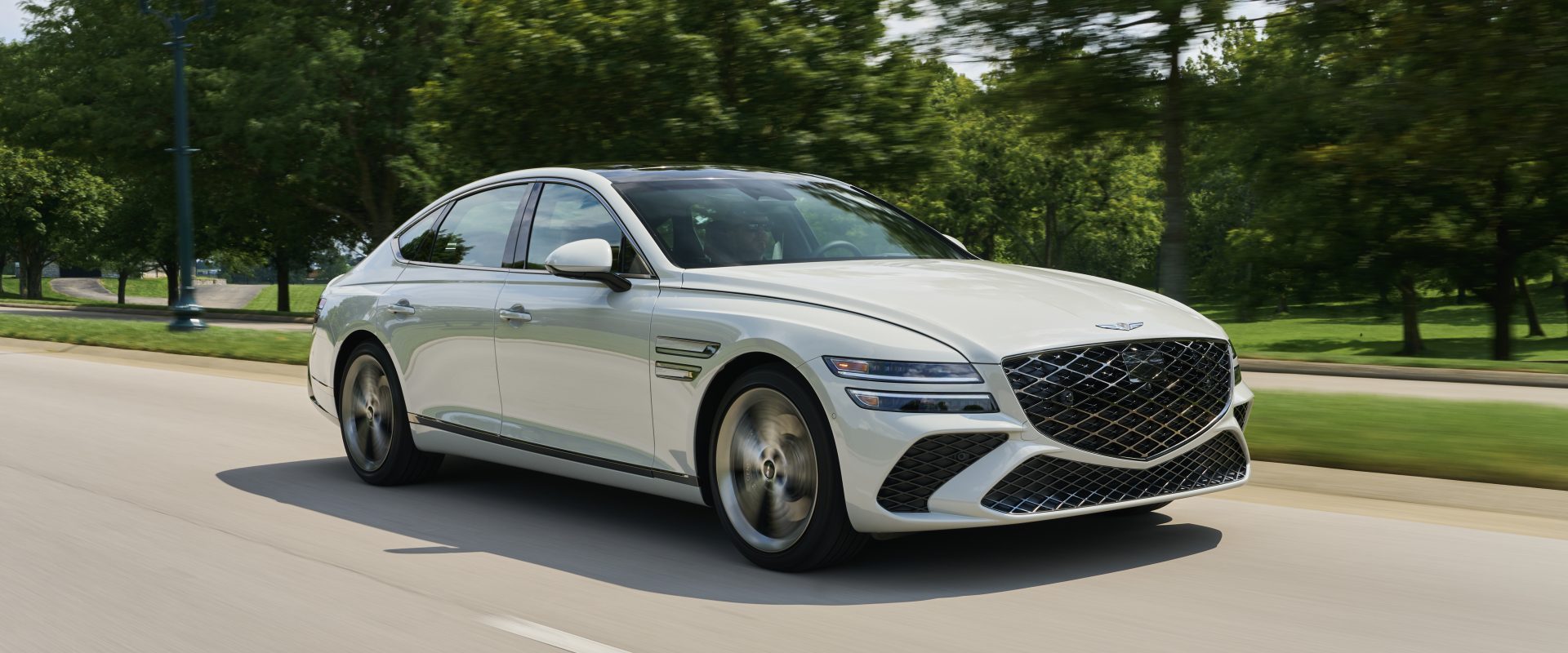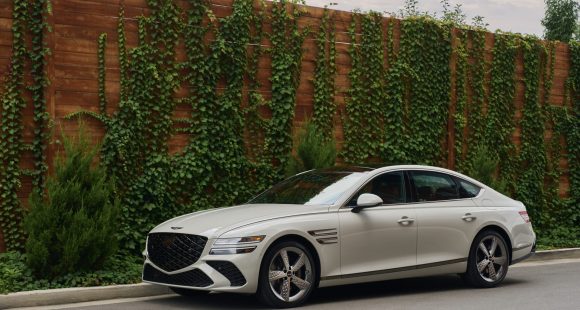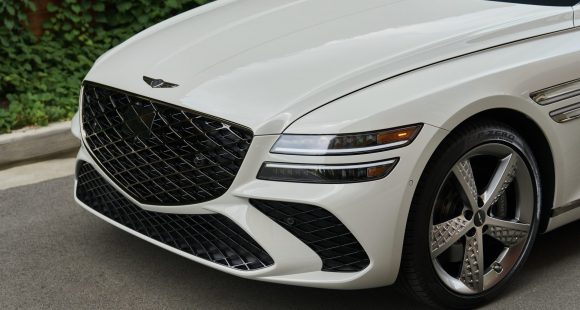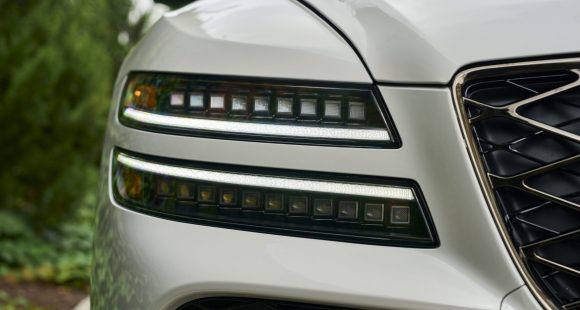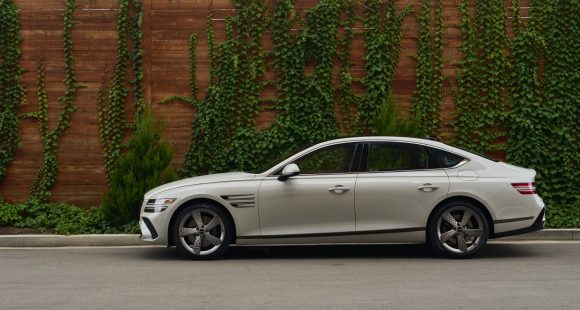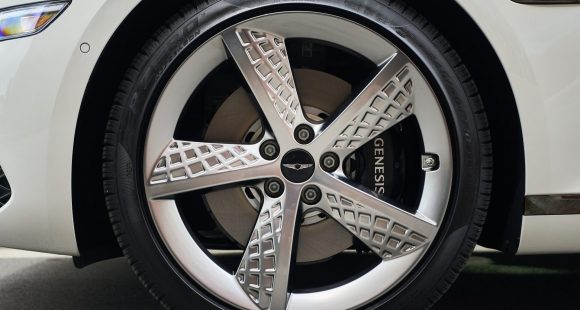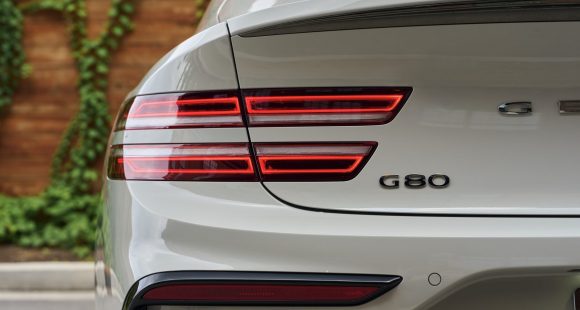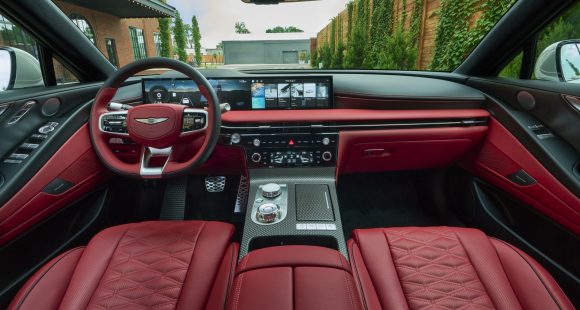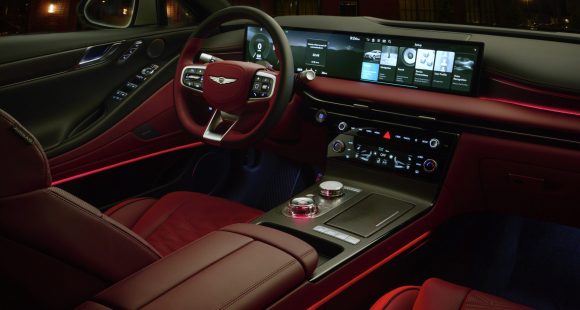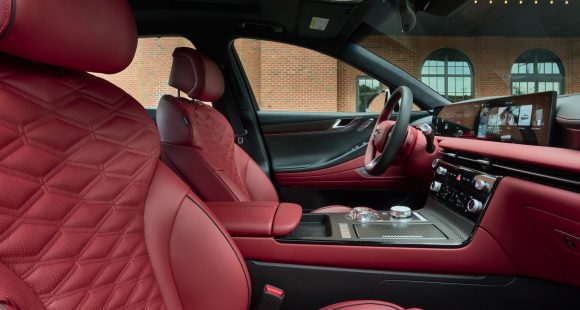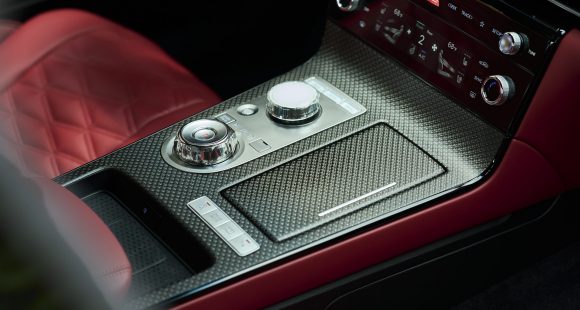2018 Ford Expedition
With the reborn Explorer and a host of other uni-body crossovers in their lineup, it’s easy to forget that Ford still make a big body-on-frame SUV…the Expedition. It’s been around for three generations now, and an all-new fourth gen Expedition delivers the biggest change yet, joining the F150 with an all-aluminum body. So, let’s see if lighter is righter.
Even in a utility world gone crossover, there are still plenty of people that need a big, truck-based SUV like this 2018 Ford Expedition. But, we’ve covered all of that before. So, what improvements does this all-new Expedition offer the power-hungry, trailer-towing, family-hauling utility buyer?
Well for starters, not only is styling more modern; but like the F150 it shares its basic full frame design with, body panels are now made of aluminum. That helps to shave off about 300-lbs. of weight.
But rather than with the F-150, the face of the full-size Expedition is more akin to the mid-size Explorer; while body sides are not quite as rounded as before, with a less obvious greenhouse. Indeed, from a distance, it appears very similar to its biggest competitor, the segment dominating Chevrolet Tahoe.
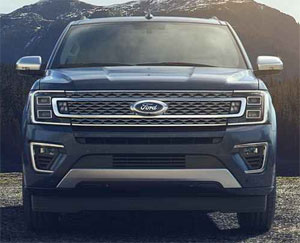 Expedition wheelbase is 122.5-inches, about 3½ more than before. And yes, a longer wheelbase Suburban fighter is available as well, at 131.6-inches, now known as the Expedition MAX.
Expedition wheelbase is 122.5-inches, about 3½ more than before. And yes, a longer wheelbase Suburban fighter is available as well, at 131.6-inches, now known as the Expedition MAX.
Cargo capacity is up; now 20.9 cubic-ft. behind the standard 3rd row, 63.6 behind the 2nd, and 104.6 with all seats folded. Perfect for late night Walmart runs. 7 or 8 passenger seating is available, with 2nd row getting a new tip-and-slide function.
Thanks to the longer wheelbase, space is more plentiful all around, beating Tahoe in second row legroom by over 2 1/2 inches. There are ample options for plugging in, and you can even live stream satellite or cable TV to the entertainment system.
Platinum trim is tops for now, with materials fitting the name. But the bulk of volume will be made up by mid-level Limited; which includes a power folding 3rd row, heated seats for 1st and 2nd rows, as well as a heated steering wheel.
Gauges are very similar to the F150’s with a mix of analog with virtual gauges, along with a wide, configurable TFT display.
Expedition power still comes from a 3.5-liter V6 EcoBoost twin-turbo. But, it’s the F150’s latest variants. Standard output is 375 horsepower, a gain of 10, with 470 lb-ft of torque. Our Platinum trimmed beast however gains 35 horses to 400 even, with torque at 480.
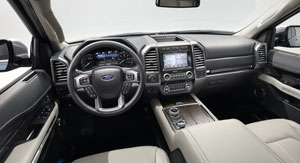 Attached, is Ford and GM’s joint venture 10-speed automatic transmission; which allows for better power at launch, as well as lower cruising RPM on the high end, for improved efficiency. It’s one of the best modern automatics we’ve sampled; finding the right gear quickly without searching around like most rival’s 9-speeds we’ve driven.
Attached, is Ford and GM’s joint venture 10-speed automatic transmission; which allows for better power at launch, as well as lower cruising RPM on the high end, for improved efficiency. It’s one of the best modern automatics we’ve sampled; finding the right gear quickly without searching around like most rival’s 9-speeds we’ve driven.
Maximum towing capacity is 9,300-lbs., significantly more than the Tahoe’s 8,600; and by far best-in-class. The F150’s Pro Trailer Backup Assist is available as well.
The optional 4-wheel drive system comes with an updated version of Ford’s Terrain management system with up to 7-different drive modes, for helping you through just about any situation you may find yourself in.
There’s also an available FX4 Off-Road Package. And while it isn’t quite Raptor-spec, you do get an automatic limited-slip rear, off road shocks, 7-skid plates, and 18-inch wheels with A/Ts, for when you leave the trailer behind and venture further off the beaten path.
The independent front suspension is virtually identical to the F150’s, while in back there’s an updated version of the outgoing Expedition’s multi-link setup rather than a solid axle.
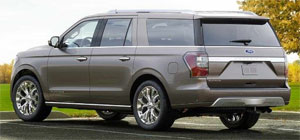 Ford has gone to great lengths to quiet the interior down, and it is indeed very calm inside; and without a doubt, road manners have improved greatly thanks to continuously controlled damping. But despite the weight loss and myriad of updates, it’s still hard to disguise the fact that this is a very big truck-like vehicle, and continues to ride and drive like a one.
Ford has gone to great lengths to quiet the interior down, and it is indeed very calm inside; and without a doubt, road manners have improved greatly thanks to continuously controlled damping. But despite the weight loss and myriad of updates, it’s still hard to disguise the fact that this is a very big truck-like vehicle, and continues to ride and drive like a one.
And while there are certainly a few people out there that prefer that in their utility; the fact that very few body-on-frame SUVs remain, while crossovers have taken over the segment, would suggest that the majority of people don’t.
Thanks to that 10-speed automatic, Government Fuel Economy Ratings for a 4X4 Expedition are 17-City, 22-Highway, and 19-Combined; that’s up from 17-Combined last year. It still has a poor Energy Impact Score though, at 17.3-barrels of annual oil consumption with CO2 emissions of 7.7-tons.
There’s no way around it, you’ve got to pay to play in this segment. Pricing starts at $52,890. Adding 4-wheel-drive varies with trim level, but adds about $3,000 more. So, you’re looking at around $75,000 for top Platinum trim, even more if you opt for the Lincoln Navigator variants.
So for 2018, the highly-evolved Ford Expedition improves in every possible way; whether you’re talking capability, interior space, fuel economy, and certainly style. Ford fans will love what they see, and no doubt this Expedition will create a few more fanatics for the brand as well.
Specifications
- Engine: 3.5 liter
- Horsepower: 400
- Torque: 480 lb-ft.
- EPA: 17 mpg city / 22 mpg highway
- Energy Impact: 17.3 barrels of oil/yr
- CO2 Emissions: 7.7 tons/yr
2025 Genesis G80
New Interior And New Tech Elevates G80 Sedan
Talk about bad timing. This second-generation G80 debuted at the height of a global pandemic. But that hasn’t stopped Genesis or this Bentley-on-a-budget sedan. In fact, since then, Genesis has unveiled a spectacular all-electric version and now given all G80s a makeover. So, let’s find out what a better and better-timed new G80 is ready to deliver.
Breaking into the luxury sedan scene requires going up against traditional brands with long pedigrees and legions of loyal buyers. But Hyundai has never shied away from a challenge, and has made steady progress with their Genesis brand, and hopes that a revised 2025 G80 midsize sedan will be their next step up.
Styling matters more when you’re the upstart, and the Genesis Athletic Elegance theme changes very little for ’25; just a new grille, slightly reshaped bumpers, new wheels ranging from 18 to 20 inches, and an updated color palette. The G80’s unique two-line LED headlamps get revised Micro Lens Array technology that boosts performance while minimizing the brightness for oncoming drivers.
Changes inside are much more significant with an entirely new dash and console, eliminating both the hooded gauge panel and dashtop wide info screen. Merging them together into one 27-inch wide LG panoramic display than runs from behind the steering wheel to over the center stack. There’s a bigger and more comprehensive control panel in the center stack; while the console gets less armrest coverage, more space for storage, and reshaped cupholders. The wider display is still a touchscreen, but there is also a console mounted controller if you prefer to keep it fingerprint free. Both options work well, but the controller is still too easy to confuse with the dial-like shifter.
Materials are on par if not a notch above most European luxury rivals, and there are 18 speakers to crank out 1,400 watts of premium sound from Bang & Olufsen. Top Sport Prestige trim comes with Nappa leather seats, carbon fiber trim, micro-suede materials for the headliner and pillar covers, heated armrests, head-up display, and upgraded active safety features. Front seats are immensely comfortable without feeling overly soft, and there’s plenty of comfort and room for adults in the back seat.
More Bentley than Benz; streaking down the track with European-style solidity that gives you very little indication of the high speed you’re traveling at.
Same powertrains as last year. Base power comes from a 300-horsepower 2.5-liter turbo-four; the upgrade is this 3.5-liter twin-turbo V6 that outputs 375 horsepower and 391 lb-ft of torque. Both are hitched to standard all-wheel drive. At our Mason Dixon Dragway test track, the AWD delivered enough grip for consistent slip-free launches. We hit 60 in 5.0 seconds flat. Run after run, the 3.5T pulled as strong as it sounds. All G80s work with the same paddle-shift eight-speed automatic transmission, and while shifting was silky smooth on the street, here on the track with Sport Mode and wide-open throttle they were noticeably firmer and quicker.
It was a very surreal experience in the cabin. More Bentley than Benz; streaking down the track with European-style solidity that gives you very little indication of the high speed you’re traveling at. For us, that was 105 mph in 13.4 seconds at the quarter. In addition to the G80’s Sport Mode that tightens steering, improves throttle response, adjusts shifting points, firms up the suspension, and reconfigures stability system parameters; Sport Prestige trim adds rear-wheel steering and an electronic limited slip differential. But, even with all of that, it didn’t feel overly sporty in our handling course. Now, we were able to comfortably carry quite a bit of speed through the cones, but there was just an overall soft, somewhat disconnected and heavy presence that had us unsure of how hard we could push. Sport Prestige also adds upgraded performance brakes. They were plenty capable, bringing this 4,600-lbs. luxury liner consistently down from 60 in just 104 feet with little fade.
Government Fuel Economy Ratings for the six-cylinder are 16 City, 24 Highway, and 19 Combined. We averaged a good 21.3 mpg of Premium. Still, that’s a slightly below average Energy Impact Score, using 15.7 barrels of oil annually with 7.8 tons of CO2 emissions.
Considering the amount of luxury packed into the G80, its $58,350 starting price, even though slightly higher than last year, remains pretty remarkable. It’s a substantial step up to the 3.5T though, as it begins at $70,850.
Genesis has existed as a standalone luxury brand for just less than a decade, and it has indeed been making steady progress into what is surely the hardest segment of all to master. The 2025 Genesis G80 sedan continues to impress and is a great option for luxury-minded buyers who prioritize true value over badges.
Specifications
As Tested
- Engine: 3.5-liter twin-turbo V6
- Transmission: eight-speed automatic
- Horsepower: 375
- Torque: 391 lb-ft
- EPA: 16 City | 24 Highway | 19 Combined
- 0-60 mph: 5.0 seconds
- 1/4 Mile: 13.4 seconds at 105 mph
- Braking, 60-0 (avg.): 104 feet
- MW Fuel Economy: 21.3 mpg (Premium)







